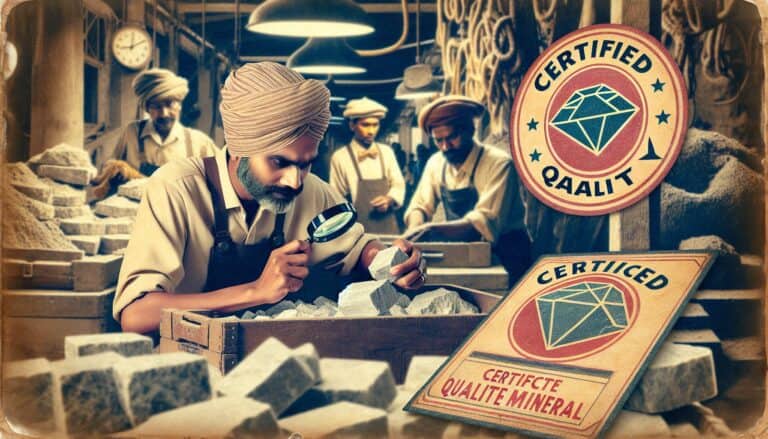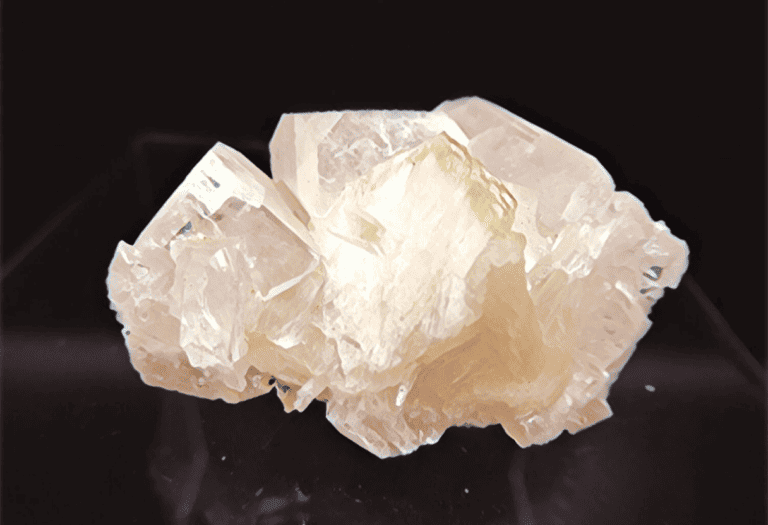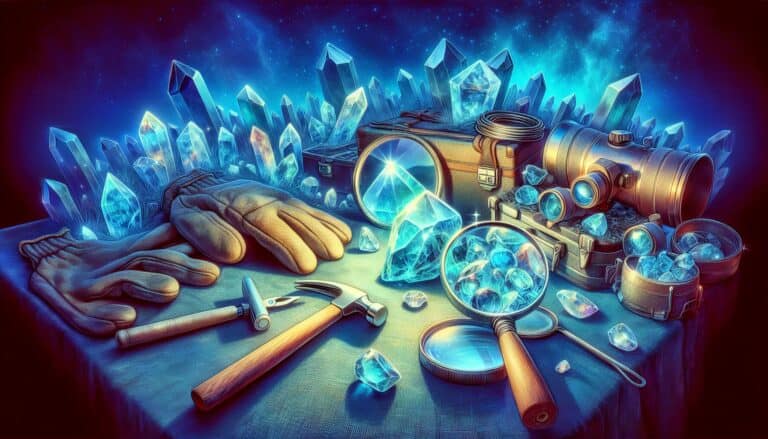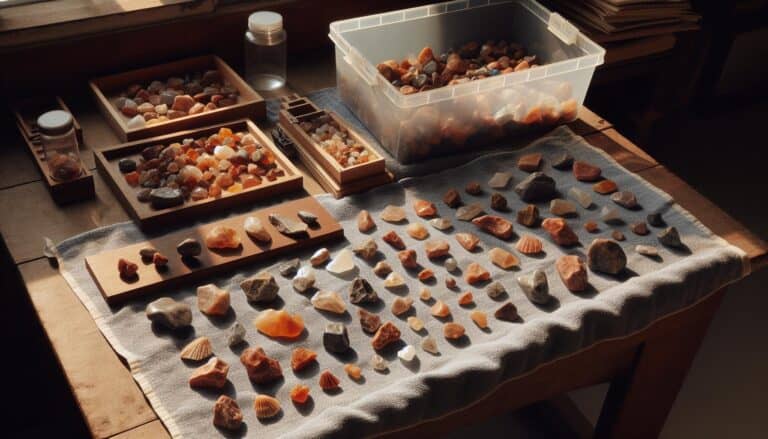If you’re a gemstone enthusiast like me, you’ve probably heard of benitoite, the striking blue gem that’s as mesmerizing as it is rare. I’ve always been fascinated by its unique charm and the way it captures the light, but what’s truly intriguing is its value.
Determining the worth of benitoite can be quite the adventure, given its rarity and the factors that influence its price. Whether you’re a collector, a jeweler, or just someone with an appreciation for rare gems, understanding the value of benitoite is essential.
Let’s dive into the sparkling world of benitoite and discover what makes it so precious. I’ll guide you through the key elements that impact its market price, so you can understand why this gem might be a shining addition to your collection.
Benitoite’s value is driven by its rarity, striking blue color, clarity, and size. Predominantly found in California, this gem is prized for vibrant blue hues with high saturation. Clear, well-cut stones are more valuable, especially those over two carats. Its limited availability significantly enhances its market price.
Rarity of Benitoite
When we talk about benitoite, it’s impossible not to address its rarity. Benitoite is often considered one of the rarest gems on the planet, and it’s this scarcity that significantly inflates its value. What makes benitoite particularly unique is that it’s predominantly found in just one location worldwide: the Diablo Range in San Benito County, California. Sure, there have been trace amounts discovered in Arkansas and Japan, but nothing compares to the California deposits.
The mine in San Benito County, known as the Dallas Gem Mine, was the world’s only commercial source of gem-quality benitoite. However, the mine officially closed to commercial mining operations in 2006, heightening the rarity of this already elusive gemstone. Since then, specimens of benitoite have primarily come from old collections or the occasional new find by rockhounds and mineral enthusiasts.
In addition, the rarity of benitoite is not just about its limited geographic availability. It’s also rare in terms of its crystal size. Benitoite crystals suitable for faceting into gemstones are themselves rare finds, with most stones being less than two carats. Stones larger than five carats are extraordinarily uncommon, and those that exceed ten carats are considered museum quality.
| Crystal Size (Carats) | Rarity |
|---|---|
| Less than 2 | Common |
| 2 to 5 | Uncommon |
| 5 to 10 | Rare |
| Over 10 | Extraordinarily rare |
For gem lovers and collectors, securing a piece of benitoite is akin to stumbling upon a buried treasure. Its deep blue to violet hue, likened to that of a sapphire, is remarkably striking, and the stone often displays a unique fluorescent quality when exposed to UV light. The combination of these factors—limited locations, small crystal sizes, and entrancing color—creates a perfect storm that makes benitoite not just a gemstone, but a rare jewel of nature.
Factors Affecting the Price of Benitoite
When discussing the value of benitoite, it’s crucial to consider the various factors that can significantly impact its price. Recognizing these elements helps potential buyers make informed decisions and sets realistic expectations for collectors and gem enthusiasts.
Color and Saturation
The most prized benitoite gemstones boast a sapphire-like blue hue, with high saturation increasing their worth exponentially. Stones that display a pure blue without any gray or green undertones are scarce and, therefore, command top dollar in today’s market.
Clarity
Like many gemstones, clarity plays a pivotal role in the valuation of benitoite. Stones free of visible inclusions or blemishes are rare, making them more valuable. It’s worth noting that benitoites are often more included than not, so finding one that is eye-clean can be a significant find.
Cut and Polish
A well-executed cut can enhance the stone’s inherent brilliance and color, while a superior polish can maximize its luster. It’s essential for these aspects to complement the gem’s natural beauty without sacrificing too much carat weight, as even a slight reduction can significantly affect the overall value given the stone’s rarity.
Size
Benitoite is typically found in smaller sizes. Gem-quality stones larger than two carats are exceedingly rare and see a remarkable increase in value per carat. The price can rise exponentially for those few specimens that exceed even three or four carats.
Provenance
The provenance, or the stone’s history and origin, adds to its allure and pricing. With the majority of benitoite coming from a single location in California, a clear lineage from this source can add to its value.
| Factor | Impact on Price |
|---|---|
| Color & Saturation | Significantly High |
| Clarity | Considerable |
| Cut & Polish | High |
| Size | Exponential Increase |
| Provenance | Notable Addition |
Understanding the nuances of these factors is paramount for anyone looking to gauge the true worth of a benitoite stone. In the fascinating world of gemstones where rarity and beauty intertwine, benitoite stands out, not just for its scarcity, but for the numerous aspects that influence its value.
Geological Origin of Benitoite
Benitoite’s value isn’t solely determined by its physical attributes. The geological origin is a significant factor that catches the eye of collectors and enthusiasts alike. It was first discovered in 1907 in San Benito County, California, and this remains the only location in the world where gem-quality crystals can be found. This extreme rarity is because benitoite forms under very unique conditions.
To understand the rarity of benitoite, it’s important to delve into its formation process. Benitoite crystallizes from hydrothermal fluids at low temperatures and high pressures. These conditions are typically found at the juncture where oceanic and continental plates meet. The mineral requires a specific geochemical environment to form, one that’s rich in barium and devoid of silica. It’s the extraordinary combination of these geological factors that contribute to the scarceness and consequent value of benitoite.
The exclusive Californian pedigree of gem-quality benitoite adds to its mystique. This is not just a gemstone; it’s a geological marvel. The peculiar nature of its origin story resonates with buyers, often elevating the gem’s worth beyond its physical characteristics. While small quantities of benitoite have been found in Arkansas and Japan, these deposits are not of gem quality and thus don’t impact the stone’s valuation as the California specimens do.
The allure of benitoite’s geological background is reflected in its market demand. As mining efforts in San Benito County have been sporadic and increasingly challenging, the supply of benitoite is not likely to surge. Laws of supply and demand kick in here; with such an exclusive origin and limited availability, the market price of benitoite is continuously bolstered. Collectors prize the uniqueness brought on by its geological birthright, just as much as they do its sparkling blue hue.
To truly appreciate benitoite’s worth, it’s crucial to regard its birth from the Earth’s enigmatic processes. The geological origin is a storyline that intertwines with its physical allure, creating a narrative that’s as captivating as the stone itself. This narrative is key when evaluating the gem’s value, ensuring that each stone’s journey from the deep Earth to the jewelry shop window adds a layer of intrigue and worth.
Evaluating the Color of Benitoite
When it’s time to assess the value of benitoite, I look at the hue, tone, and saturation of the stone’s color. These three aspects can significantly impact its worth. Hue refers to the gemstone’s color range, from rich sapphire blues to variations with slight purple undertones. Benitoite that exhibits a pure, deep blue is typically the most sought after.
Tone is about the color’s darkness or lightness, and when it comes to benitoite, a medium to medium-dark tone is ideal. This optimal tone underscores the stone’s natural vibrancy without it appearing too dark or excessively light, which could dilute its potency.
Saturation means the purity or intensity of the color. For benitoite, those with even and strong saturation fetch higher prices. Tap into benitoite’s true potential by scouting for stones that lack any gray or brownish coloration, as these secondary tones can reduce the gemstone’s overall appeal and value.
Benitoite’s desirable color profile doesn’t end with observation alone. I delve into spectroscopic analysis to identify the presence and interaction of trace elements, like iron and titanium, contributing to its distinctive blue hue. It’s these very elements that can either enhance the stone’s beauty or detract from it, influencing collectors and aficionados in their purchasing decisions.
Prospective buyers are often captivated by the way benitoite handles light. The gem’s unique dispersion properties—greater than that of diamond—play a crucial role in its visual allure. A benitoite that can brilliantly reflect light to exhibit a range of spectral colors is truly a collector’s delight, thus raising its market value substantially.
In the world of benitoite, colors do more than just please the eye; they tell stories of scarcity, geological wonders, and meticulous human efforts in extraction and crafting. Each time I evaluate a benitoite’s color, I’m reminded that I’m not just assessing a stone; I’m appreciating a rare piece of Earth’s artistry.
Determining the Clarity of Benitoite
Clarity is a critical factor when determining the worth of benitoite. When I examine this stunning gemstone, I’m looking for the absence of inclusions or flaws that can detract from its visual appeal. Flawless benitoite is incredibly rare, and even the slightest inclusion can significantly affect its value. It’s important to understand that the clarity grading scales used for benitoite aren’t standardized in the same way they are for diamonds. However, gemologists often use similar methods to assess clarity.
When assessing benitoite for inclusions, I rely on both magnification and the naked eye. Under 10x magnification, the types of inclusions found within the gemstone can be characterized and their impact on the overall quality assessed. Common inclusions in benitoite are:
- Needle-like rutile
- Tiny gas bubbles
- Feather-like fractures
These inclusions can interrupt the path of light through the stone, thus diminishing its sparkle and overall aesthetic. I’ve found that the stones with the fewest visual inclusions fetch the highest prices on the market. Typically, clarity is categorized into levels ranging from ‘Loupe Clean’—which is virtually inclusion-free even under magnification—to ‘Included’ where the inclusions are visible to the naked eye and affect transparency.
The rarity of benitoite means that even stones with minor imperfections are highly sought after. Collectors often have to balance the stone’s size and color with its clarity to determine its desirability. Since benitoite features high dispersive powers—displaying an array of colors, similar to a diamond—clarity plays a significant role in how these colors are perceived and can greatly influence the gem’s visual impact.
In the market, I’ve seen that the gem’s rarity often leads to a greater tolerance for inclusions in comparison to more common stones. That said, if you’re in possession of a piece that’s both rich in color and clear, you’re looking at a highly valued specimen. Assessing clarity is a nuanced process, but it’s crucial for estimating benitoite’s true worth.
Conclusion: Buying & Selling Benitoite
Benitoite’s worth is a complex interplay of color, clarity, cut, size, and provenance. As we’ve seen, each factor plays a pivotal role in determining the value of this rare gemstone. The scarcity of pure blue stones and the geological specificity of its formation make benitoite not just a mineralogical rarity but a collector’s treasure.
It’s clear that the market for this California gem is driven by its unique characteristics and the stories embedded in its hues and inclusions. Whether you’re an avid collector or just someone who appreciates the beauty of rare gemstones, benitoite offers an unparalleled allure.
Its value goes beyond the monetary—it’s a piece of Earth’s history, a natural wonder that has captivated those lucky enough to encounter its brilliance.







